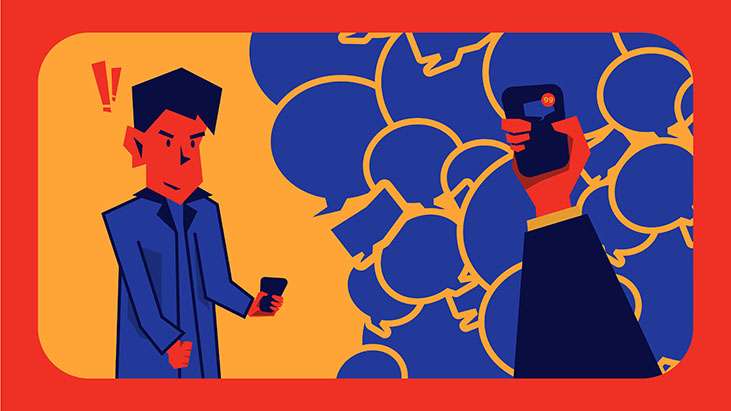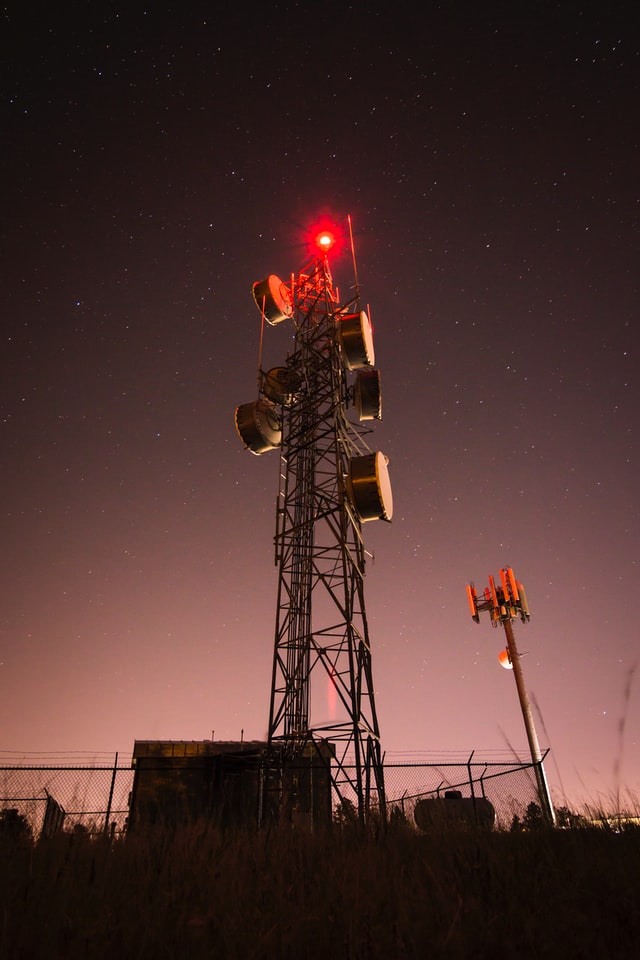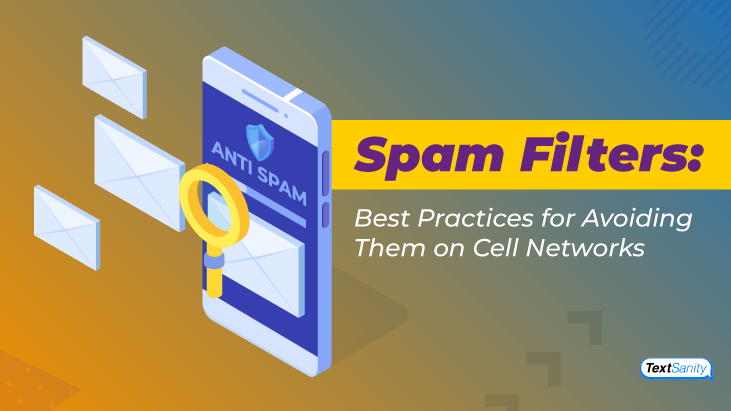Spam Filters: Best Practices For Avoiding Them on Cell Networks
Text message marketing is becoming more ubiquitous around the world, but especially in the United States. There are plenty of reasons why. Text message marketing, sometimes referred to as mass text messaging, is simple, cheap and efficient.
Mass Text Messaging Regulations
Mass text marketing, and really all text message marketing, regulations come from two governmental agencies. The Federal Trade Commission and the Federal Communications Commission. Each governmental organization works in tandem to ensure American consumers are protected on their cellular devices.
The most notable law that affects mass text messaging: the Telephone Consumer Protection Act of 1991. This act regulates how businesses communicate with consumers on their phones. The kind of phone (i.e. cellphone, smartphone, landline phone) doesn’t matter. The TCPA exists because of unwanted robo- and spam calls. However, with the advent of mass text messaging from applications, it began to regulate text message marketing.

Cellular networks got involved in text message marketing regulation because consumers looked to them for help. And, in recent years, the government essentially held them responsible for phone spam. Therefore, instead of battling with the government over regulation, cellular networks work to eliminate robo- and spam calls and texts. This is sometimes referred to as the STIR/SHAKEN framework.
Because of increased regulations, companies and individuals, using text message marketing, must follow specific guidelines. This ensures that texts aren’t filtered by the spam filters on the cell networks. To make certain your mass text messages get through, follow the basics set forth in the TCPA. Additionally, follow cellular networks’ stipulations when it comes to sending mass text messages.
Best Practices to Avoid Texts Filtered by Spam Filters on Cell Networks
1. Follow Basic TCPA Guidelines
One of the most important TCPA rules: companies must adhere to strict solicitation guidelines without explicit consumer consent. Even when companies get consumer consent, the option to opt-out at any time is required and protected under TCPA.
That’s why most mass text messages begin with an opt-in and give instructions for an opt-out. Another part of the TCPA that impacts mass text messaging: the times that a business sends mass text messages. Mass text messages are only allowed between the hours of 8am and 8pm.

The penalties for violating TCPA include fines from $500 to $1500 per text if the sender knowingly violates TCPA. Plus, cellular networks continue to punish you by blocking your future communication efforts such as calls and text messages.
2. Get a Dedicated Short Code
There are two ways to interact with customers using text message marketing. The first is by using a traditional, long code phone number. These 10-digit numbers are what most everyday people use as their phone number. The second is by using a short code phone number. These 5- or 6-digit phone numbers are easier to remember.
Long Code Phone Numbers
Both long and short code phone numbers send mass text messages. However, in recent years, cellular networks penalize businesses sending mass text messages from long code phone numbers. They cite businesses using long code phone numbers to get consumers to respond because it’s a “local” number.
Short Code Phone Numbers
Subsequently, the best way to avoid this is to choose a short code. But, there are two types of short code. One is shared short code and the other is dedicated short code. Shared short codes are used by multiple companies at once. Each company uses a different keyword campaign, but the same number. This way companies pay less and still benefit from a short code.

Shared Short Code Phone Numbers
Using a shared short code, however, gets dicey. Especially if one company using a shared short code violates TCPA guidelines by spamming consumers. When this happens, the short code is automatically shut down by the cellular network.
This doesn’t just punish the guilty business, it essentially punishes every company using the short code. Plus, some cellular networks, in recent years, no longer allow shared short codes.
Dedicated Short Code Phone Numbers
The best way to cover yourself and benefit from a short code is by using a dedicated short code. Dedicated short codes are only used by one company. Of course, they are more expensive and take longer to get, but it’s worth it for companies. Staying on the good side of cellular networks reaching hundreds of thousands of opted in customers at once.
3. Follow Basic Text Message Marketing Etiquette
Part of avoiding mass texts filtered by cell networks spam filters is ensuring mass texts don’t look like spam.

Here’s a list of rules to follow
-
Don’t send mass text messages to consumers who don’t want them.
-
Don’t send too many mass text messages (at one time or in general).
-
Identify yourself and your call to action (keep it simple, short, and to the point).
-
Personalize your messages.
-
Don’t promote anything illegal (includes drugs, firearms, tobacco, alcohol, and porn).
Beside following the list above, put a system in place to deal with replies to mass text messages. Mass text messages are sent to many consumers at once, but received individually. Therefore, you need a communication system that deals with replies. You’ll also want someone to monitor this system, so that consumers don’t slip through the cracks.
Receiving an Error Code
When companies refuse to follow the guidelines above, they are often hit with a carrier violation error code. Specific error codes vary from text message marketing platform to text message marketing platform. You need to check with your platform to understand the error code you received. Unfortunately, if you receive an error message for a carrier violation, there’s not a lot of options.
Essentially what you’ve done is violated one of the guidelines above. Because of that, the cellular network blocked your mass text message since it’s perceived as spam. The best way to avoid this: follow all the laws, rules, and regulations surrounding mass text messaging.

Avoid Mass Texts Filtered by Spam Filters on Cell Networks
In the end, it is your responsibility to avoid mass texts filtered by spam filters on cell networks. Following the guidelines in the FCC, FTC, and TCPA help you reach customers without violating federal rules and regulations. Mass text messaging is one of the most useful marketing tools, just remember to use it wisely.
And, as always, we’re here to help you with any questions surrounding mass text messaging. Simply contact us with your questions and we’re happy to help answer them for you.


